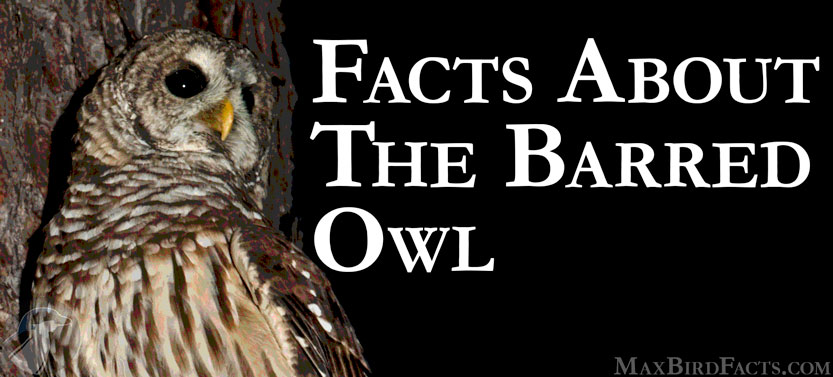Barred Owls (Strix varia) are wonderfully fascinating nocturnal raptors. They primarily reside in old-growth forests near or in freshwater.
Their range is across the whole of the US East Coast, west to just past the Mississippi River, up along all of southern Canada, and ending in portions of the Pacific North West.
These owls prey on small mammals, amphibians, reptiles, other birds, fish, and invertebrates, basically anything they can catch. Barred Owls are relatively large birds of prey, weighing in at 1.76 pounds (0.79 kg) and with a wingspan of 1.1 feet (0.33 m).
So, now that we know a little more about this spectacular bird, let’s dive into 10 Facts About The Barred Owl!
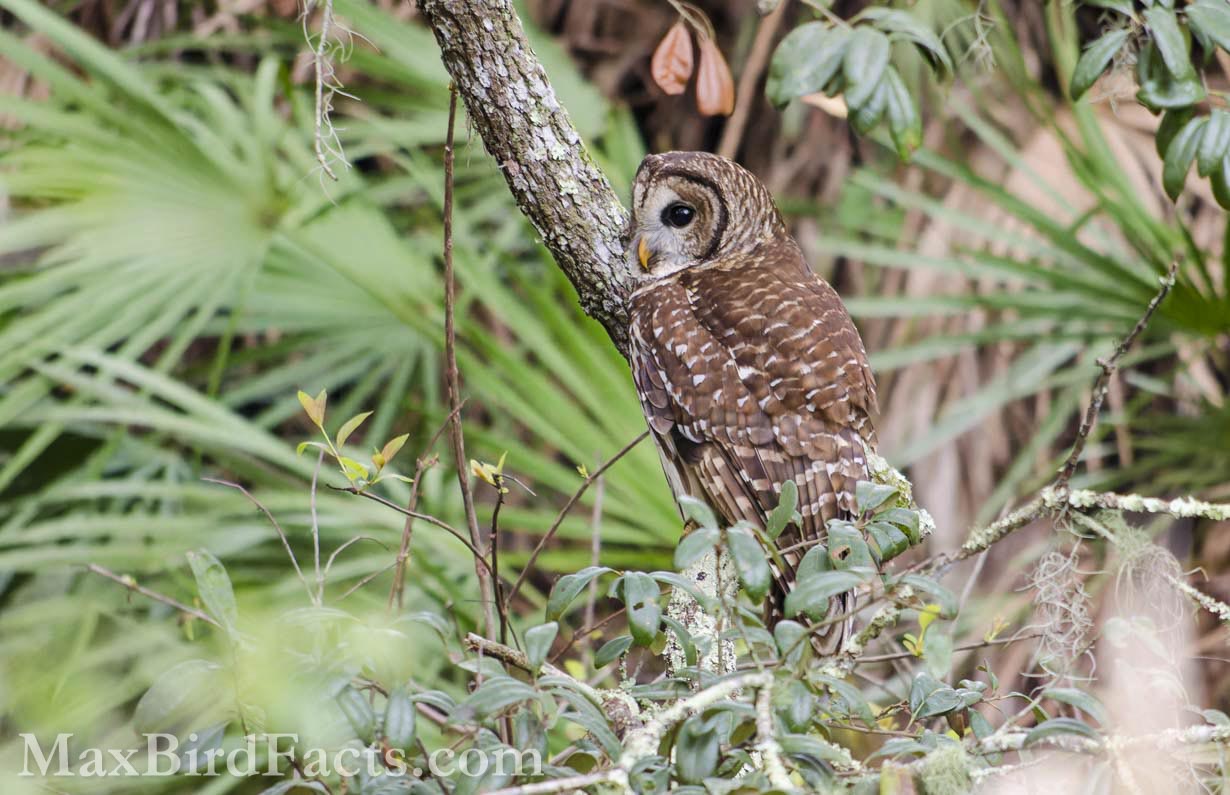
1. The Barred Owl’s name, Strix varia, means “Variable Screecher.”
The Barred Owl’s genus name, Strix, gains its meaning from the Ancient Greek for “screecher.” Strix also refers to an evil spirit or nightmare in Greek. However, the translation to screecher makes more sense due to the common referral of owl vocalizations as screeches.
The species name for the Barred Owl, varia, is Latin for variable, change, or different. This meaning is obvious once you see the use of varia as the prefix of its English counterpart variable.
2. You’ll likely hear the Barred Owl’s famous who-cooks-for-you call long before seeing it.
Like many birds, Barred Owls have a variety of vocalizations they employ to communicate. Their calls all seem to have a more rounded feeling than the sharp calls of a Great Horned Owl or Eastern Screech Owl.
The iconic call of the Barred Owl, Who cooks for you? Who cooks for you call?, is one of my favorite sounds from the southern swamps. This song typically ends with a long descending hooooaaaw, which travels exceptionally far.
Their vocalizations also stretch into sounds that resemble barking, snapping, and screams. Young owls also hiss at their parents when begging for food, making a rising kssssssship sound.
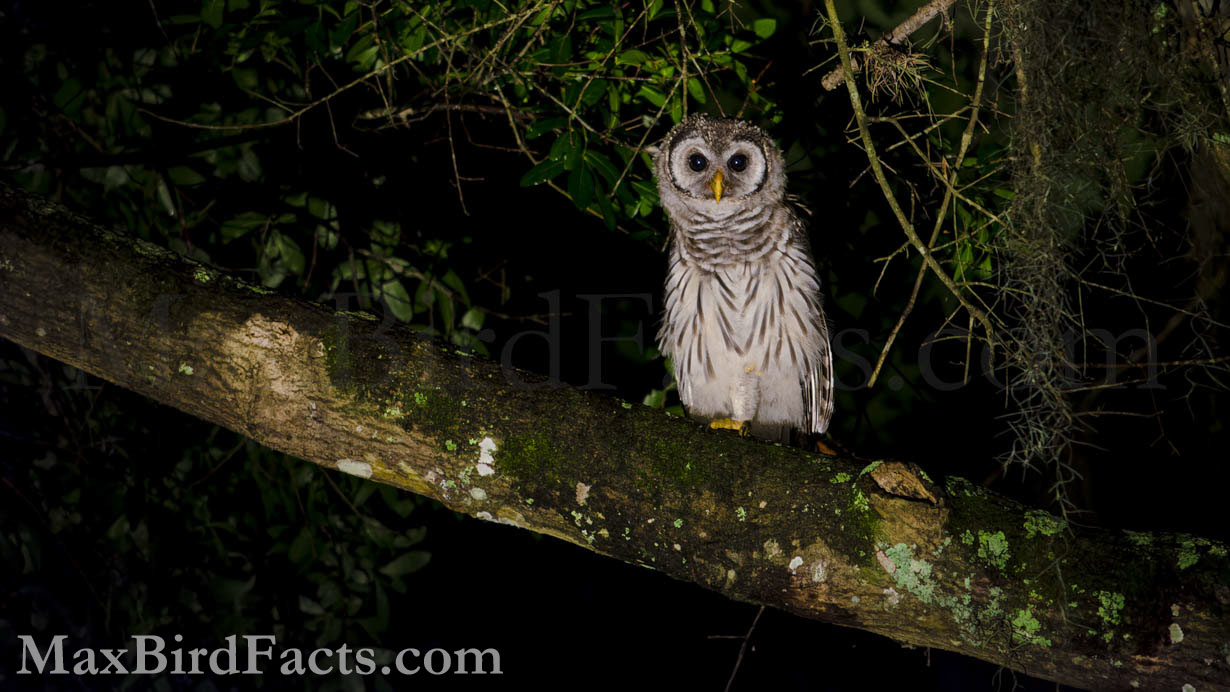
3. Barred Owls are primarily marsh and swamp hunters.
As stated earlier, Barred Owls prefer old-growth forests with a mix of deciduous and coniferous trees near freshwater. Still, these owls spend much of their time stalking prey above the shallow, still waters of swamps, marshes, and bogs.
However, their requirement for forests seems to outweigh their propensity for swamps. Their need for premade cavities could drive their love of older forests, making the likelihood of abandoned woodpecker nests greater than in young forests.
Their love of water likely depends on the assortment of prey they can capture there. Numerous species of rodents, frogs, snakes, lizards, and birds are all easy targets to a stealthy owl.
4. Barred Owls also hunt during the day.
While Barred Owls are primarily nocturnal (nighttime) or crepuscular (dawn and dusk), they are often active during the day or diurnal. This increased activity could help owls gather more food for their nestlings or prevent them from competing with other nocturnal predators (more on that soon).
Prey activity may also be higher during the daylight hours, so finding food is likely easier. This flexibility with their schedules has helped Barred Owls expand their range and become a very successful species.
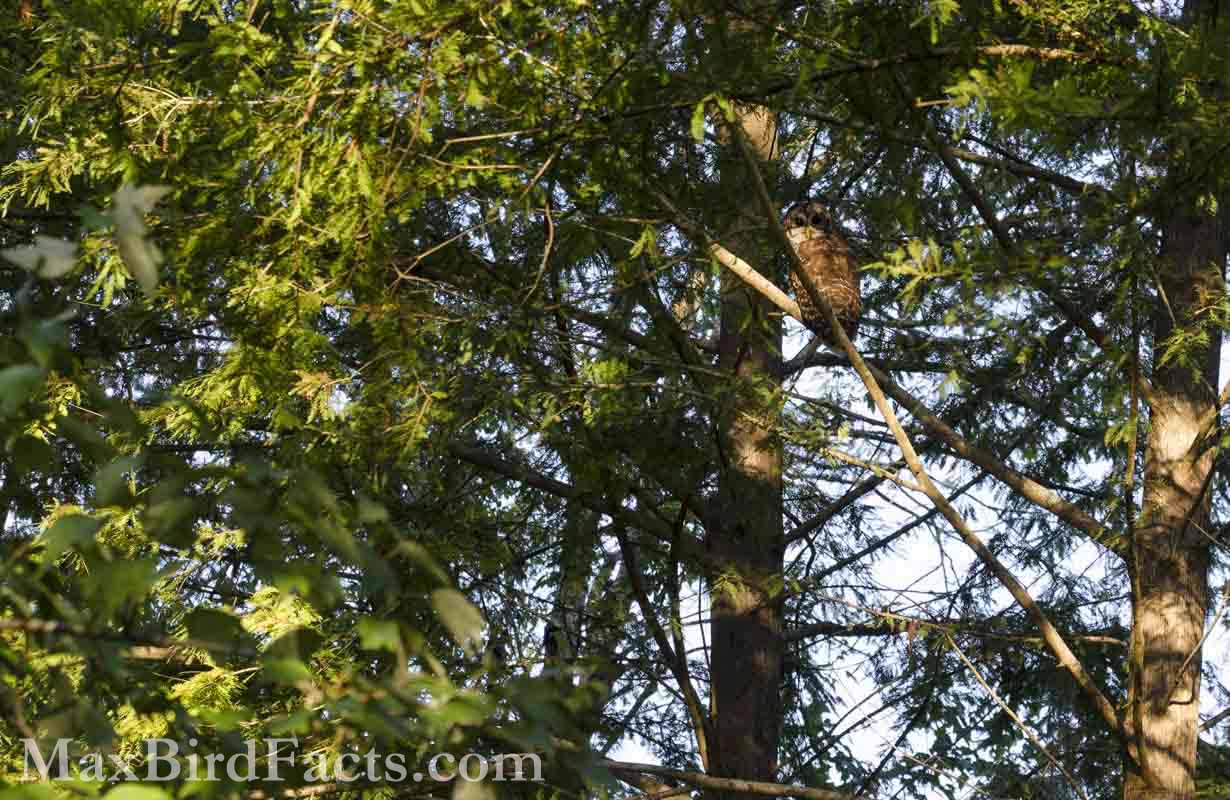
5. Barred Owls and Great Horned Owls (Bubo virginianus) are fierce enemies.
If a Great Horned Owl discovers a Barred Owl in its territory, the larger bird will vigorously hunt its smaller cousin. Even when a new Great Horned enters an established Barred’s territory, the Barred will either flee or become the Great Horned’s meal.
This fierce hatred stems from the direct competition the Barred Owl and Great Horned Owl have towards each other. Both birds are primarily nocturnal hunters of small mammals and require abandoned cavity nests.
This competition is likely a driving force for the move of the Barred Owl into more waterlogged locals. Great Horned Owls occasionally set up territories in or near swamps but prefer drier homes.
6. There are three subspecies of Barred Owl.
The three subspecies of Barred Owl are:
- Florida Barred Owl (Strix varia georgica)
- Texas Barred Owl (Strix varia helveola)
- Northern Barred Owl (Strix varia varia)
The Northern Barred Owl is the most widespread group, covering virtually the whole range of the species. However, the Texas Barred Owl is the most restricted, only covering roughly 30,000 square miles in southeast and central Texas.
The Florida Barred Owl covers the whole southeastern United States and invades the Texas subspecies in central Texas. There is strong hybridization among all three groups where their borders meet, strengthening the evidence that these birds are still considered subspecies to the Barred Owl rather than distinct species.
The differences between these three groups are fairly minute, with their primary distinctions being coloration, the number of feathers on the owl’s toes, and size discrepancies in the bill and feet.
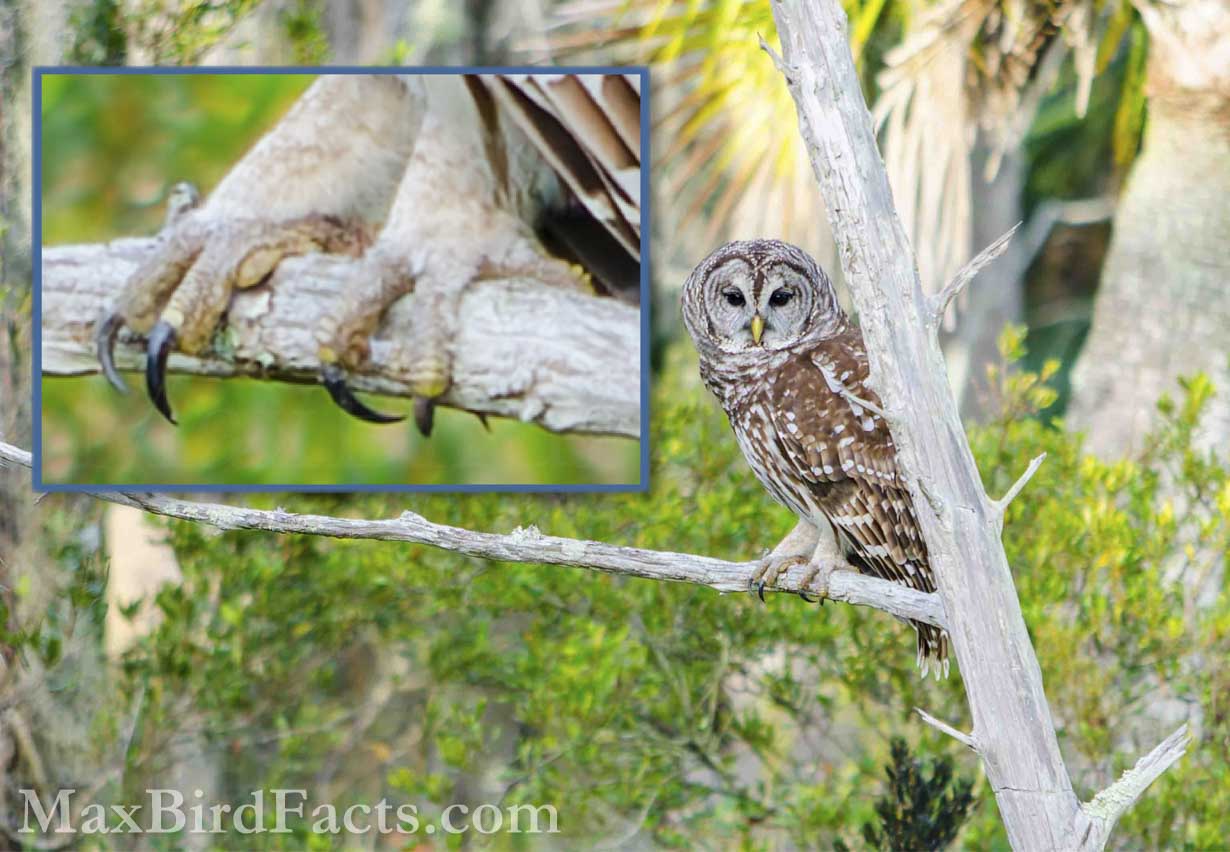
7. The Cinereous Owl (Strix sartorii) was split as its own species in 2010 after being considered a subspecies of the Barred Owl after 136 years.
First described as a subspecies of the Barred Owl in 1874, the then Mexican Barred Owl is now officially called the Cinereous Owl as its own species. This recent decision was based on new genetic research on the Mexican Barred Owl, proving it was distinct from other Barred Owl subspecies.
I should stress that this recent renaming of species is due largely in part to the remote area the Cinereous Owls call home. The first recording of a Cinereous Owl vocalization was captured in 2015, cementing the difference between it and the Barred.
This split is still hotly contended, with International Ornithologists’ Union (IOU) demanding recognition as a distinct species due to these new genetic and vocal dissimilarities between the Cinereous and Barred Owls. At the same time, BirdLife International still marks the Cinereous Owl as a subspecies to the Barred in their 2020 edition of the Handbook of the Birds of the World.
It is my belief that there is more than enough evidence that the Cinereous Owl is a distinct species from the Barred Owl. The vocalizations of the Cinereous are more similar to the Fulvous Owl (Strix fulvescens), which is another species split from the Barred Owl and constantly debated whether or not it too should remain a species or return to being a subspecies.
Regardless, their distinct vocalizations and clear genetic differences should make this decision to mark the Cinereous Owl as a species apart from the Barred Owl.
8. Barred Owls actively harm their western cousins, the Spotted Owl (Strix occidentalis).
Unfortunately, much like the relationship between the Barred and Great Horned Owls, the Spotted and Barred Owls have a tenuous affinity due to resource competition.
As the range of the Barred Owl grows down the Pacific North West into California, they have slowly been pushing out their smaller Spotted cousins. The Barred is so successful at displacing the Spotted because of their more flexible diet and larger stature.
Because of their negative impact on the Spotted Owl, the US Fish and Wildlife Service has worked to remove Barred Owls from historic Spotted Owl territories. These experiments seem effective, and Spotted Owl populations have increased in the absence of Barreds.

9. Barred Owls don’t migrate and rarely leave their small home ranges.
Barred Owls are homebodies in that they do not migrate or even stray more than a few miles away from their territory. A study done in 1988 banded 158 Barred Owls and recorded their distribution. Of those 158 birds, none traveled more than 6.2 miles (10 km) away.
This lack of movement might seem strange, but consider the regions these birds reside in. Most stay within warm, temperate zones with high levels of prey and a fairly difficult requirement for their nest site.
The Barred Owl’s preference for premade tree cavities for their nests could be the key to understanding why they don’t migrate. This secondary cavity-nesting for such a large bird makes finding new nest holes difficult and is likely why the owls stay so near them year-round.
10. Barred Owls are truly monogamous birds.
We can presume the Barred Owl is a truly monogamous species, meaning they mate for life and don’t have extramarital affairs. However, there haven’t been any genetic tests on owlets, so there is no concrete proof these birds don’t conduct extra-pair mating.
To further the difficulty in proving their commitment, several “floater” owls. These could be previous fledglings that want to stay close to home, or they could be possible competitors for the resident pair.
Regardless, some studies have shown high levels of nest site fidelity in Barred Owls, some returning to the same location for over ten years. With this evidence for such a solitary creature to return to the same nesting area year after year, I think it is very likely that Barred Owls can be considered truly monogamous.
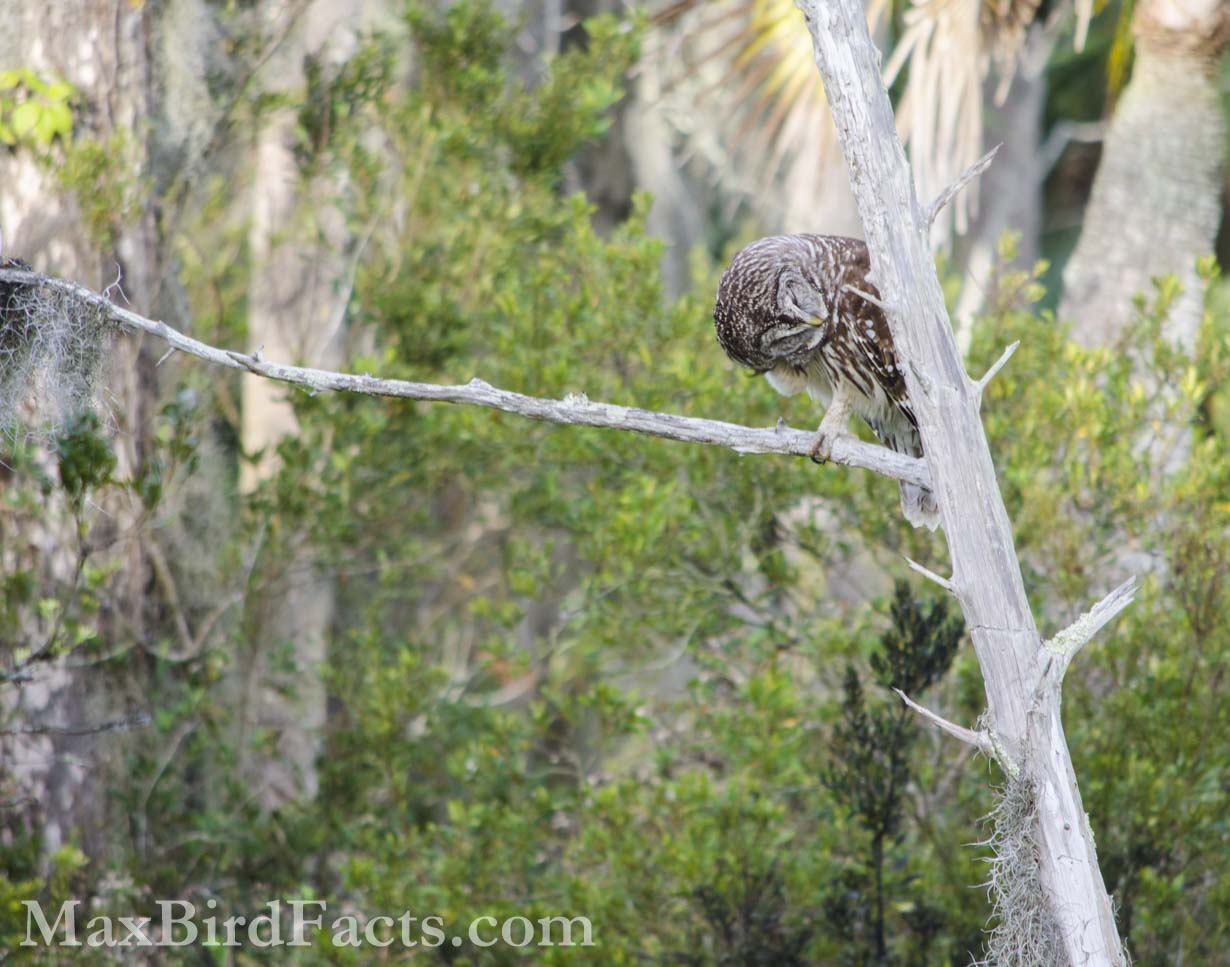
Now We Know 10 Facts About The Barred Owl!
I know I focused a lot on the genetics and relationships between the Barred Owl and its close relatives, but I think this is a fascinating example of science at work. Within the last few decades, we’ve seen three species split from what were all considered subspecies to the Barred Owl.
With increased genetic testing development, there could be a real possibility that the Texas Barred Owl (S. v. helveola) could also become a separate species. Its relative isolation from the Northern and Florida subspecies could lead to new behaviors and genetic differences that could make it a species, much like the Cinereous Owl of southern Mexico.
Anyways, I hope you enjoyed learning some facts about the Barred Owl. From their odd ability to hunt during the day, their distinct who-cooks-for-you call, or their incredibly complex relationship with other North American Strix owls, Barred Owls are truly breathtaking birds.
If you have ideas or suggestions for topics you would like me to write about in the future, feel free to leave a comment below or shoot me an email!
If you enjoyed this article, please subscribe to my email list to be the first to know when I post new articles!
Get Outside & Happy Birding
Max
